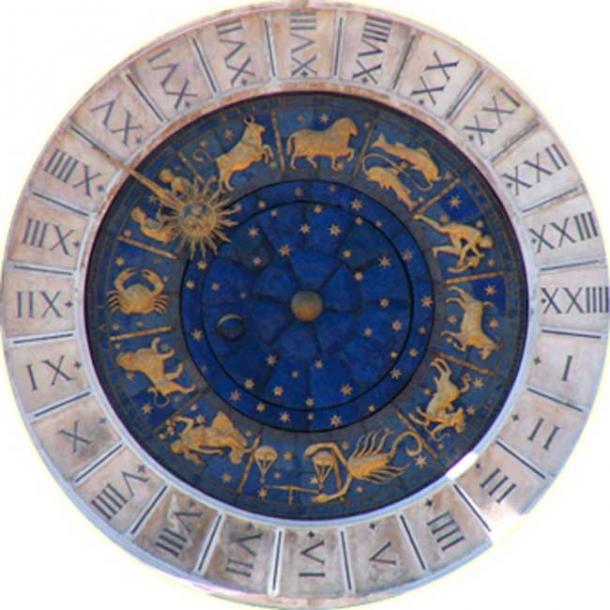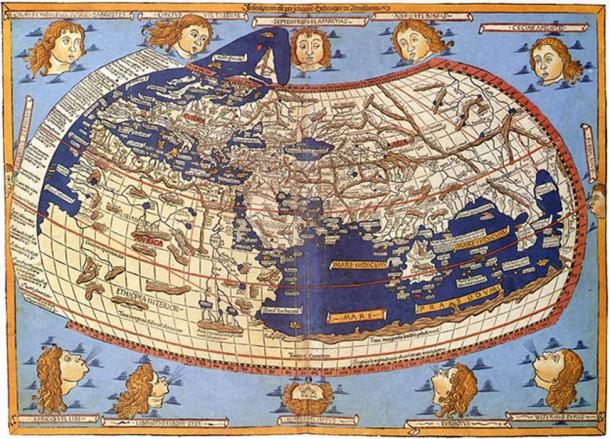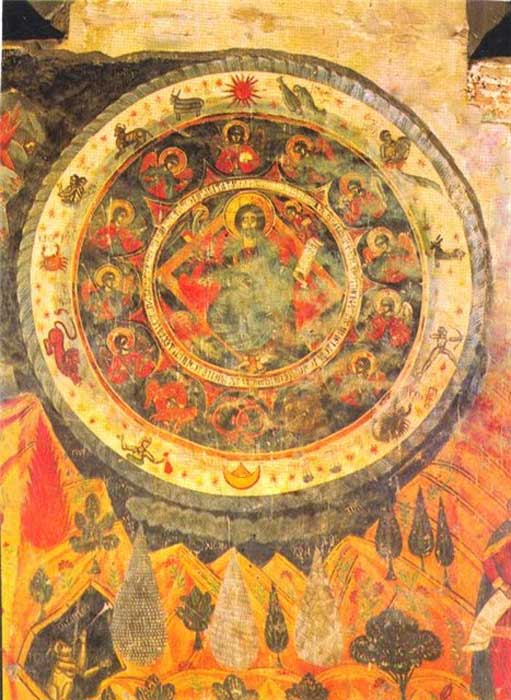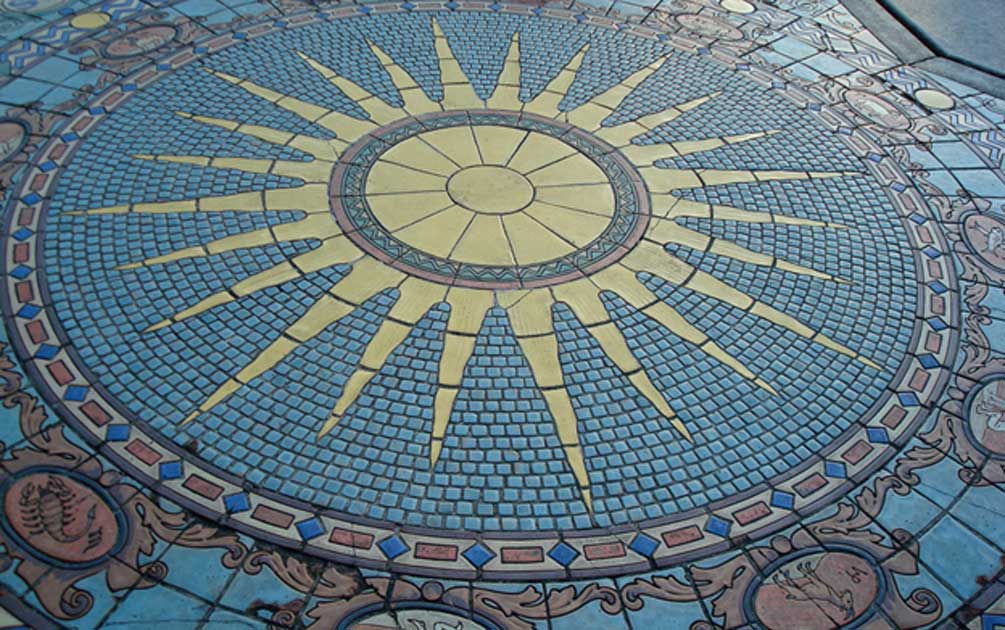The 4,000 Year History of Horoscopes: How Astrology Has Been Shaped Throughout the Millennia
Every time ancient Greece is mentioned, most people automatically think of democracy, the Olympic Games, mythology, philosophy, technology and various sciences such as mathematics and astronomy. It seems that very few are aware that the ancient Greeks were also superstitious, despite their logical thinking. This perhaps explains why it was the Greeks who shaped the system of astrology into its modern day form, even though the first organized system of astrology arose during the 2nd millennium BC, in Babylon.
The Greeks are Introduced to Astrology
The Babylonians were the first people to systematically apply myths to constellations and astrology and describe the twelve signs of the zodiac. The Egyptians followed shortly after by refining the Babylonian system of astrology, but it was the Greeks who shaped it into its modern form. The Greeks borrowed some of their myths from the Babylonians and came up with their own. For that matter, even the word astrology – as well as the science of astronomy – is derived from the Greek word for star, “asteri.” But how and when did the Greeks were first introduced to astrology?
- Looking to the Stars of Australian Aboriginal Astronomy
- Can Astronomy Explain the Biblical Star of Bethlehem?
- An Ancient Mayan Copernicus: Hieroglyphic Texts Reveal Mayans Made Major Discovery in Math, Astronomy
During the conquest of Asia by Alexander the Great, the Greeks were eventually introduced to the unknown cultures and cosmological schemes of Syria, Babylon, Persia and central Asia. It didn’t take too long after that for the Greeks to overtake cuneiform script as the international language of academic communication and part of this action was the transference of astrology from cuneiform to Greek.

Astrological clock at Venice (CC0)
Around 280 BC, Berossus, a priest of Bel from Babylon, traveled to the Greek island of Kos where he ended up teaching astrology and Babylonian culture to the local populations. This was the very first time that the world of astrology was transferred officially to the Hellenistic (and this Western) world of Greece and Egypt that was under Greek rule at the time. Initially, the ancient Greeks that were known for their logical way of thinking, were skeptical about astrology and wondered about many things, such as why animals weren't ruled by the same cosmic powers as humans for example.
By the first century BC two varieties of astrology were in existence: one that required the reading of horoscopes in order to learn accurate details about the past, present and future, while the other focused to the soul's ascent to the stars and the search for human meaning in the sky. In other words, the Greeks attempted to understand general and individual human behavior through the influence of planets and other celestial objects, while some used astrology as a form of dialogue with the divine.

Path taken by the point of vernal equinox along the ecliptic (CC BY-SA 3.0)
The Zodiac and Ptolemy’s Contributions to Western Astrological Tradition
Horoscopic astrology first appeared in Hellenistic Egypt. The earliest extant Greek text using the Babylonian division of the zodiac into twelve signs of thirty equal degrees each is the Anaphoricus of Hypsicles of Alexandria in 190 BC. Furthermore, the sculptured “Dendera zodiac” – a bas-relief from the ceiling of the pronaos of a chapel dedicated to Osiris in the Hathor temple at Dendera, containing images of Taurus and the Libra dating 50 BC – is the first known depiction of the classical zodiac of twelve signs.

The Dendera zodiac as displayed at the Louvre. (Public Domain)
A very significant role in the development of Western horoscopic astrology was played by Greek mathematician, astrologer and astronomer Ptolemy, whose work Tetrabiblos laid the foundations of the Western astrological tradition. Under Ptolemy the planets, Houses, and signs of the zodiac were first explained in great detail while their function set down hasn’t changed much compared to the present day. Ptolemy lived in the 2nd century AD, three centuries after the discovery of the precession of the equinoxes by Hipparchus around 130 BC.

15th-century map depicting Ptolemy's description of the inhabited world, (1482, Johannes Schnitzer). (Public Domain)
Hipparchus of Nicaea was a Greek astronomer, geographer, and mathematician, who is credited with the invention of trigonometry, even though he’s best remembered for his incidental discovery of precession of the equinoxes. His lost work on precession, however, never didn’t move around until it was brought to prominence by Ptolemy. Moreover, Ptolemy decisively explained the theoretical basis of the western zodiac as being a tropical coordinate system, by which the zodiac is aligned to the equinoxes and solstices, rather than the visible constellations that bear the same names as the zodiac signs.

Depiction of Ptolemy employing a quadrant, from Giordano Ziletti's Principles of astrology and geography according to Ptolemy, 1564. (Public Domain)
Antiochus of Athens and Dorotheus of Sidon
Two very significant astrologers that with their works contributed in the evolution of Western astrology are undoubtedly Antiochus of Athens and Dorotheus of Sidon. Dorotheus was a first century AD Greek astrologer who lived and worked in Alexandria just like Ptolemy. He’s remembered for writing a didactic poem on horoscopic astrology known as the Pentateuch. The Pentateuch, which was a textbook on Hellenistic astrology, has come down to us mainly from an Arabic translation dating from around 800 AD carried out by Omar Tiberiades .The text, fragmentary at times, is therefore not entirely reliable, and is further corrupted by interpolations by the later Persian translators. Nevertheless, it remains one of our best sources for the practice of Hellenistic astrology, and it was a work of great influence on later Christian, Persian, Arab and medieval astrologers.
- The Mysterious Mix of Myth and Sky Observations in Serbian Folk Astronomy
- Clay Tablet Reveals Ancient Babylonians Used Calculus to Track Jupiter 1,500 Years before Europeans
- Surya Siddhanta: The Startlingly Accurate Astronomy Book of the 1st Millennium BC

17th-century fresco, Cathedral of Living Pillar, Georgia of Christ in the Zodiac circle. (Public Domain)
Antiochus of Athens is another significant Greek astrologer from the same Hellenistic Period. He made one of the earliest references to astrological reception, and discussed the twelves houses of the astrological chart, heliacal risings and settings, and the Lots. Despite the fact that most of his writings are now lost, some very important fragments and extracts of his work have survived. He’s credited with writing Thesaurus, Eisagogika (an Introduction to astrology), and also an astrological calendar titled, On the risings and settings of the stars in the 12 months of the year. His immense impact can be traced to many writers that followed him, such as the Neoplatonist Porphyry who heavily relies on Antiochus for definitions of technical terms used by Ptolemy in Tetrabiblos, and Rhetorius of Egypt, while there is also a later Byzantine epitome of his work.
Top image: Astrology Tile Mosaic, Ringling's Mansion (Courtyard) (CC BY-SA 2.0)
References
History of Astrology - http://www.historyworld.net/wrldhis/PlainTextHistories.asp?historyid=ac32
Hellenistic Astrology - https://en.wikipedia.org/wiki/Hellenistic_astrology
Horoscopic Astrology - https://en.wikipedia.org/wiki/Horoscopic_astrology
The Anaphoricus of Hypsicles of Alexandria - http://booksandjournals.brillonline.com/content/books/b9789004315631_011
The Zodiac of Dendera - http://www.louvre.fr/en/oeuvre-notices/zodiac-dendera
The Biography of Ptolemy - http://www-groups.dcs.st-and.ac.uk/history/Biographies/Ptolemy.html
The Biography of Hipparchus - https://www.britannica.com/biography/Hipparchus-Greek-astronomer
The Biography of Antiochus of Athens - https://en.wikipedia.org/wiki/Antiochus_of_Athens
The Biography of Dorotheus of Sidon - http://www.hellenisticastrology.com/astrologers/dorotheus-of-sidon/




















Comments
Hello Theodoros, I have been shown that the source of the Celestial zodiac is actually from the below, a study of the Earth. I look at ancient zodiacs and see how they rotate in opposite directions. You may see this looking at the Denderah zodiacs.
If you have an interest in astrology or have years of experience, here are a few basic foundation facts that will open your mind to a deeper comprehension of astrology. This strips back any complexities and looks at some basic knowledge, focusing on anatomical astrology foundation principals.
We are all familiar with the zodiac signs and have probably heard of the zodiac belt. All of the planets rotate around the sun on a flat plane.If we extend this plane outwards towards the stars we find the zodiac belt which includes the collection of stars that this plane meets. We know the path of the sun by day, well this same path at night is the zodiac belt of which the complete circle is divided into 12 zones or the 12 zodiac signs. Each zodiac sign is represented by an iconic symbol and these are all Earthly forms. It is defined that each of these signs connect to the human body from the head to the feet and likewise the zodiac belt aligns with the traditional Celestial body many may know as Nut from the head to the feet.
Each zodiac sign represents the 12 parts of the body and each sign was selected to represent the anatomical position. Aries connects to the top of the head anatomically and the ram has the anatomical feature of the horns and so makes this correlation. Next the bull has a strong neck as an anatomical feature and was chosen to represent the connection to the neck. Gemini the arms and Cancer the breast, Leo the lungs and Virgo the womb, Libra the middle pivoting balancing point of the anatomy. Connections are made to Pisces where the anatomical feature a fish has, is the unique tail fin correlating to the feet.
Very interestingly and lost to many is this connection to the Earth's body. Each of these iconic representations are Earthly observations and were selected from the Earth's anatomical awareness to represent the corresponding anatomical position. Ancient scientific studies or observations realised that nature and life changed as you moved around the World. The zodiac belt lines up with the equator and when you divide the equator into 12 zones, as you see on all maps an amazing reality unfolds. The famous quote "as above so below" reveals the missing Earth zodiac belt. By studying life in these 12 zones the secrets of our Celestial order may be understood.
In each of the 12 zones around the equator we discover the 12 zodiac signs, these were discovered and chosen to represent the anatomical changes from the head to the feet. A trilogy, a three stage step in life bound by the design from head to tail became the Universal template for life. Our body represents terrestrial life from head to tail, 12 anatomical parts and likewise the Earth's 12 zones from head to tail projected to the 12 zones of our Celestial path considered the influencing source. The three steps in the size of life forms that we can see with our eyes bound by a simple pattern to life.
Leo the land of the sphinx carved in stone is a solid position to begin defining the ancient Earth zodiac. The next World zone is Israel the land of Virgo, the virgin Mary combining with the seed represents the womb position. Well inscribed is the next zone on the World body where the Buddha, Krisna....a balancing aura, karma, being the pivoting point of the anatomy. Now in a Westerly direction from the Sphinx is the breast region where stone circles gather. Gemini and Taurus are both inscribed in South America and delightfully the heads of Easter Island are in the appropriate zone. Out into the Pacific the fish and water zones then rise into land again. By realising that the Earth zodiac expresses how life on Earth changes from head features to tail features modern science and observations arise to a traditional pattern. A contemporary alignment awaits acceptance of these historically recorded positions and a physical form is ready to emerge.
Realising this anatomical connection may open your understanding to the effects on the human anatomy. The simple observation is that when somebody is stressed their anatomical position reacts. I have studied this for 30 years and it is true without a doubt from my recordings and observations. I have also studied peak birth rates around the World and also birth zones for various conditions such as diabetes and once again the evidence is supportive of the connection.
The slightly more complex aspect is that pressure can be applied by a person's birth zone. If somebody is having a reaction to pressure being applied by another then that anatomical zone may be affected. This can be seen most evident in children reacting under pressure from parents as there is limited interaction with others.
Birthmarks and other markings may often be expressed on a new born if the Mother is stressed or tracing the stress due to the location of such a marking on a child becomes logical.
If you have any observations or experiences related to anatomical astrology which you are happy to share please let me know. If you seek additional information or are interested in a contemporary alignment please reply.
Kind regards B.Sears NZ